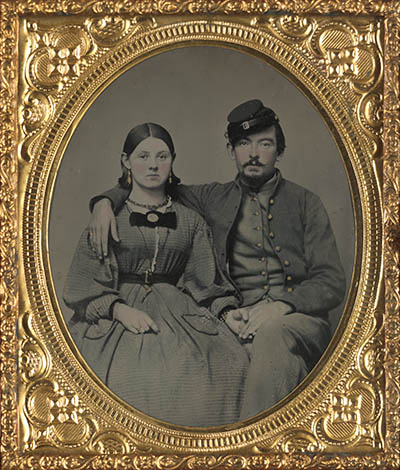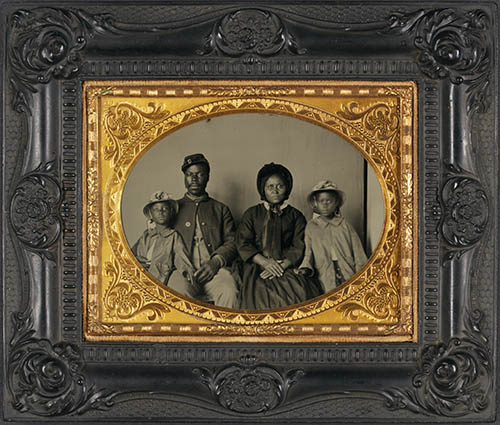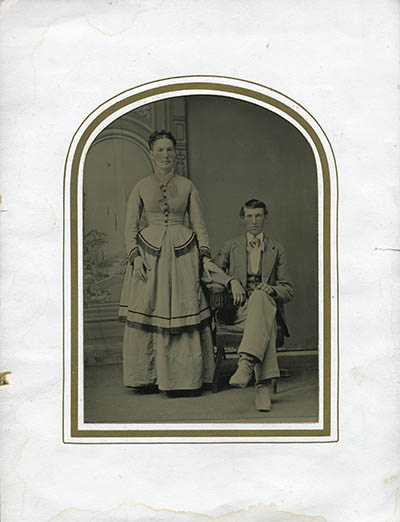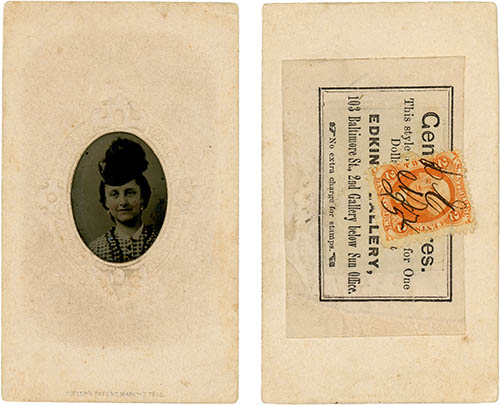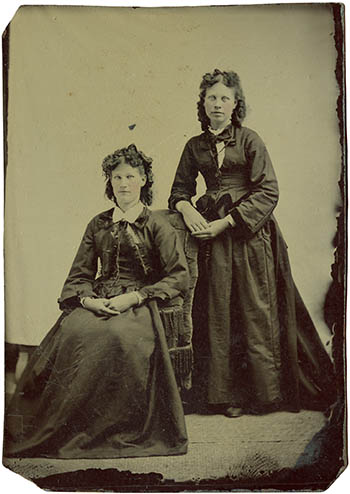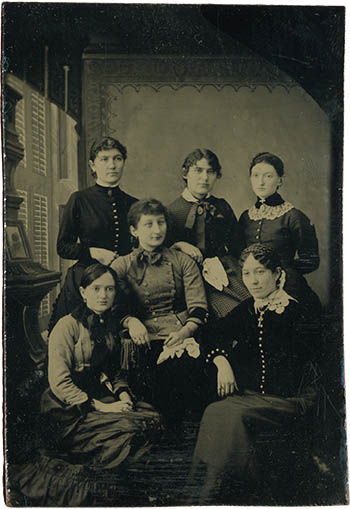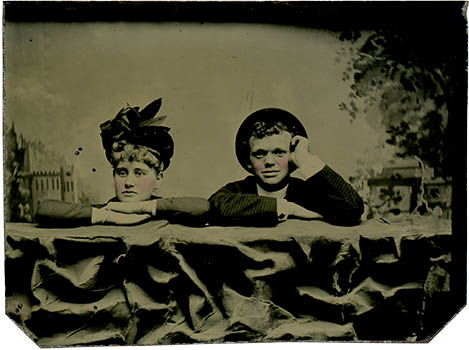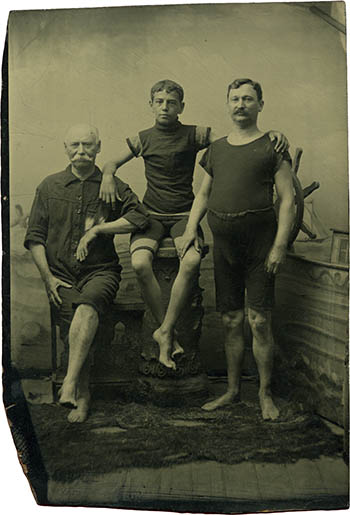This ambrotype of an unknown young girl, probably from around 1860, is typical of the portraits of the time. The quality of the photo, the separately applied color, and the elaborate brass inset in the union case all suggest that it was taken in a professional studio. Overall probably a better than average ambrotype.
Frederick Scott Archer (1813―2 May 1857) of Bishop Stortford, Hertforshire, was apprenticed to a bullion dealer and silversmith in London, which led him to the study of numismatics and employment as a coin appraiser. His interest in the artistic qualities of the coin led to an interest in sculpture, and, finally, in 1847, to an interest in the calotype process as an aid in his sculptural work.
Archer found that the calotype didn’t suit his needs so he began tinkering with the process, experimenting with collodion and various other substances. In 1849 he coated a glass plate with a mixture of collodion and potassium iodide and immersed it in a solution of silver nitrate, the plate, while still wet, could be exposed and developed within the camera. His method, first described in the March 1851 Chemist, would be become known as the wet-plate or collodion process.1 Archer never patented his discovery, and never made any money from it. He died in penury in 1857.
Private Edward A. Cary and his sister, Emma J. Garland. Charles Rees, 1861-62. LOC
ca.1863–1865. LOC
A number of early photographers, including Archer himself, found that when viewed against a black background, the wet-plate negatives became positive images, and, in 1854, James Ambrose Cutting (1814–1867) of Boston patented3 the process, calling it the “imperishable picture” or Ambrotype (from the Greek ambrotos, “immortal”)
The ambrotype was reasonably quick, yielded a decent image,4 and, most importantly, was inexpensive; but it also required a immediate access to a darkroom and the resulting plates were not all that immortal – being just as fragile as the daguerrotype and requiring a protective glass cover and case. Nevertheless, by the early 1860s it was becoming the dominant format in America.
The ambrotype’s popularity, however, would be short-lived. By the early 1850s photographers were experimenting with collodion on various surfaces, including leather, cardboard and iron plates. William Neff, a Cincinnati daguerreian, and Hamilton Smith, professor of chemistry at Kenyon Collage, perfected the collodion image on japanned iron and Smith patented the process in 1856. This process, known as the Melainotype, ferrotype, or later, the tintype, would become one of the dominant forms of photography for the next thirty years.
The image quality was nothing to write home about, but the process was fast (plates could be prepared, shot, developed and varnished in less than six minutes), cheap (the chemistry cost less than a cent), and the finished plates were remarkably durable. The tintype dramatically changed photography. It was now possible for nearly anyone to afford to have their portrait taken and tintypists sprung up everywhere – from established daguerrian studios to hacks at the local fair.
The tintype recorded every aspect of the Victorian family. Soldiers carried tintypes of their families into Civil War battles and sent home photos from the campaign. Mothers commissioned memento mori of their dead children. New brides were photographed in their gowns. Men were photographed at their trade. Fathers and sons were photographed in novelty scenes at local fairs. The list goes on. but you get the idea.
The tintype continued to be produced – often at local fairs or carnivals – until the 1920s, well after the adoption of the albumen print or the silver gelatin print
1. The process consisted of coating a glass plate with a mixture of collodion2 and iodide salts, then (in darkroom conditions) sensitizing the plate with a silver nitrate solution, creating a light-sensitive silver iodide coating. The prepared plate, still wet (or at least damp), was placed in the camera and exposed to light. The exposed plate was the developed in a solution of iron sulfate and acetic acid, converting the exposed silver halides into a metallic silver. The plate was then fixed with sodium thiosulfate and varnished for protection, creating a permanent negative.
2. Collodion is a mixture of nitrocellulose (AKA pyroxylin or guncotton) dissolved in diethyl ether and ethyl alcohol. Nitrocellulose is explosive and ether is crazy flammable (flash point <–26F°). Perhaps not suprisingly there were many recorded incidents of tragic darkroom explosions. Collodion was originally used to hold surgical dressings or to mend wounds and flexible collodion (a mixture of collodion, camphor and castor oil) is still used as “Liquid Bandages.”
3. US patent Numbers 11,213, 11,266 and 11,267. Go ahead, look them up. Knock yourself out.
4. Better than a calotype (mostly due to the perfectly smooth glass surface), but not better than the daguerrotype. To be fair, however, no process to date really gives a better image than a properly taken daguerrotype.
5. The tintype is an thin iron plate, and does not contain any tin. The name may have been inspired by the tin snips used to cut the plates, or may refer generically to any cheap metal, differentiating it from more valuable metals, such as the silver coated plates used for daguerrotypes.
4 May 2009, updated 16 Dec 2014 ‧ Photography

